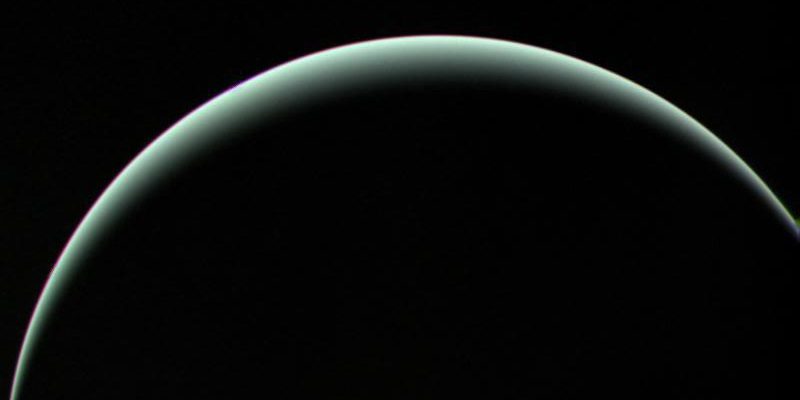
Today in Science: Voyager 2 met Uranus
On this date 36 years ago, Voyager 2 met Uranus, the solar system’s remote seventh planet. The Voyager 2 spacecraft came within 50,640 miles (81,500 km) of its icy blue-green cloud tops. It was the closest – and only – visit a human-made craft made to this planet. During its closest approach, and in the weeks before and after, Voyager 2 transmitted a treasure trove of scientific data that utterly changed our view of this enigmatic, distant world.
Many remarkable discoveries came from this cosmic meetup. Data from Voyager 2 revealed that a Uranian day is just 17 hours and 14 minutes long. It showed that Uranus’ atmosphere is similar to that of the other gas giants, composed mainly of hydrogen and helium. Below that lay water, ammonia and methane ices.
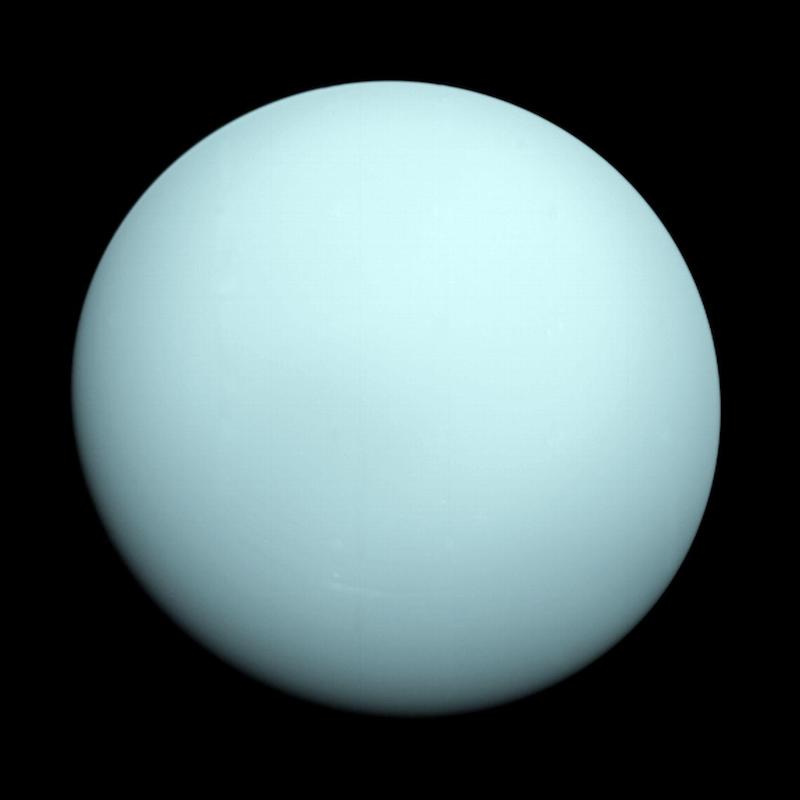
EarthSky 2022 lunar calendars now available! Order now. Going fast!
Uranus, the tilted planet
Scientists knew, from telescopic observations made from Earth before Voyager 2 met Uranus, that the planet’s rotation axis was tilted at 98 degrees. In other words, the planet’s polar axis lies almost in the plane of its orbit. Scientists think a collision with a planet-sized object early in the solar system’s history tipped Uranus on its side. As a result, Uranus has, perhaps, the most interesting seasonal patterns in the solar system.
Voyager 2 revealed that Uranus has a bizarre magnetic field. The planet’s magnetic field tilts 59 degrees from Uranus’ axis of rotation. This creates a non-uniform magnetic field for Uranus that can vary in strength by up to 10 times.
Voyager 2 found that Uranus has radiation belts similar in intensity to those of Saturn. Earth also has radiation belts, with the two main ones known as the Van Allen belts.
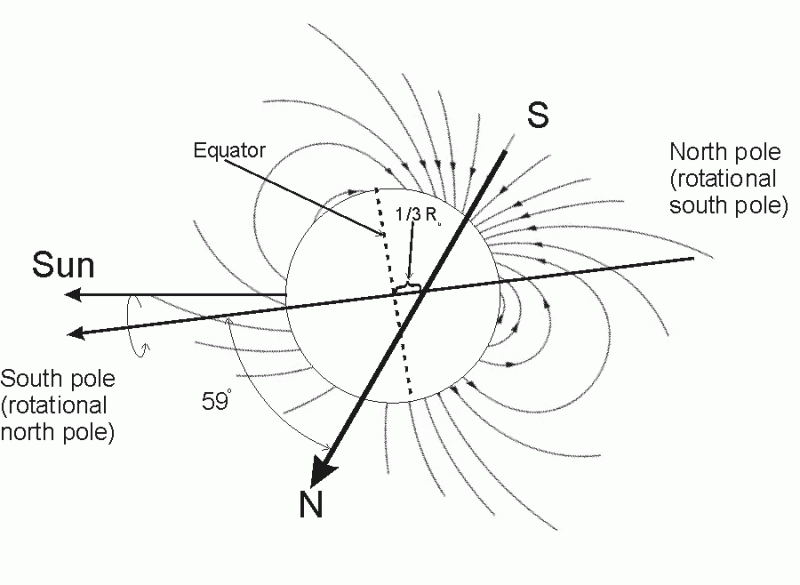
The many moons of Uranus
Voyager 2 met not only Uranus but its many moons. Initially, scientisits discovered 10 new moons in the data Voyager 2 sent back, for a total of 15 moons known at the time. In 1999, additional analysis of Voyager 2 data revealed an 11th moon. Today, we know of 27 moons orbiting Uranus.
Among the newly discovered moons was Puck, just 100 miles (160 km) in diameter, with a gray, heavily cratered surface.
Voyager 2 also imaged the Uranian moons we already knew, revealing their amazing geology.
The last Uranian moon discovered before Voyager 2’s arrival was Miranda. Gerard Kuiper found it in 1948. Thanks to Voyager 2, we saw Miranda much more clearly. In fact, it earned the nickname of Frankenstein moon because its strange patchwork appearance.
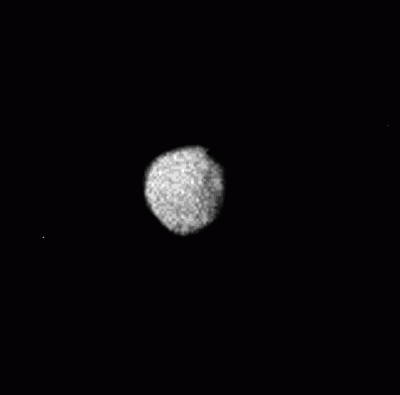
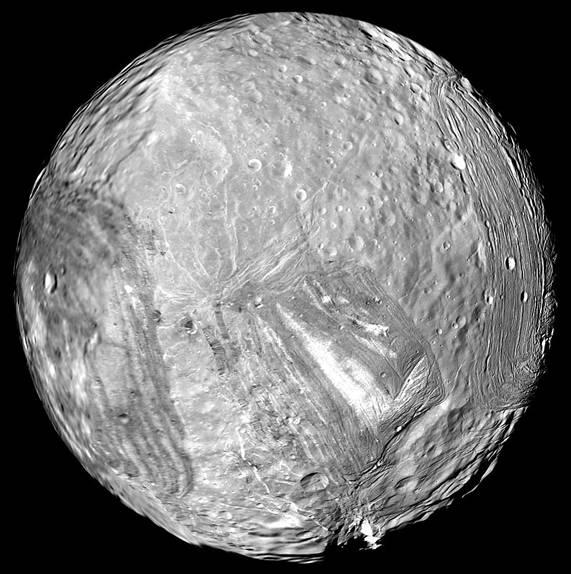
Rings and things
By the time Voyager 2 met Uranus, scientists had already discovered Uranus’ rings from Earth. Voyager 2 surveyed Uranus’ rings and discovered two new ones, bringing the total number of rings to 11. Today, there are 13 known rings.
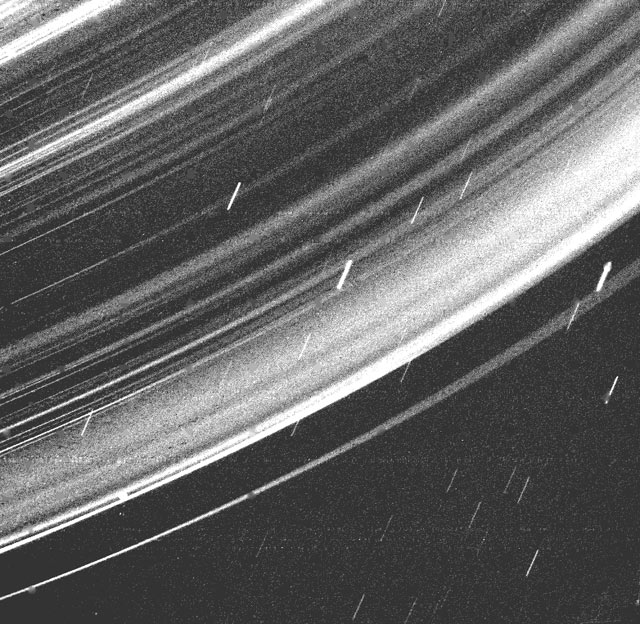
And so Voyager 2 vastly increased our knowledge of Uranus, and then left this world behind for one final rendezvous, with Neptune in August 1989, before heading out of the solar system. In December 2018, NASA announced that Voyager 2 had entered interstellar space. Now, forty-four years after it launched from Cape Canaveral in 1977, the spacecraft is almost 12 billion miles (19.3 billion km) from home.
By the way, it was the famous astronomer William Herschel who discovered Uranus. It was the first planet discovered with a telescope and the first added to the group of bright planets – Mercury, Venus, Mars, Jupiter, Saturn – known since antiquity.
Uranus is the third-largest planet in our solar system. It could contain 63 Earths. But it isn’t a bright planet because it’s very far away, about 1.9 billion miles (3 billion km) from the sun, or 20 times the Earth-sun distance.
Bottom line: Voyager 2’s closest encounter with Uranus happened on January 24, 1986. It’s the only spacecraft to have ever visited this frigid world in the outer solar system. It left a rich legacy of information that has forever changed our view of that pale green-blue planet.
The post Voyager 2 met Uranus on January 24, 1986 first appeared on EarthSky.
from EarthSky https://ift.tt/33ARq5P

Today in Science: Voyager 2 met Uranus
On this date 36 years ago, Voyager 2 met Uranus, the solar system’s remote seventh planet. The Voyager 2 spacecraft came within 50,640 miles (81,500 km) of its icy blue-green cloud tops. It was the closest – and only – visit a human-made craft made to this planet. During its closest approach, and in the weeks before and after, Voyager 2 transmitted a treasure trove of scientific data that utterly changed our view of this enigmatic, distant world.
Many remarkable discoveries came from this cosmic meetup. Data from Voyager 2 revealed that a Uranian day is just 17 hours and 14 minutes long. It showed that Uranus’ atmosphere is similar to that of the other gas giants, composed mainly of hydrogen and helium. Below that lay water, ammonia and methane ices.

EarthSky 2022 lunar calendars now available! Order now. Going fast!
Uranus, the tilted planet
Scientists knew, from telescopic observations made from Earth before Voyager 2 met Uranus, that the planet’s rotation axis was tilted at 98 degrees. In other words, the planet’s polar axis lies almost in the plane of its orbit. Scientists think a collision with a planet-sized object early in the solar system’s history tipped Uranus on its side. As a result, Uranus has, perhaps, the most interesting seasonal patterns in the solar system.
Voyager 2 revealed that Uranus has a bizarre magnetic field. The planet’s magnetic field tilts 59 degrees from Uranus’ axis of rotation. This creates a non-uniform magnetic field for Uranus that can vary in strength by up to 10 times.
Voyager 2 found that Uranus has radiation belts similar in intensity to those of Saturn. Earth also has radiation belts, with the two main ones known as the Van Allen belts.

The many moons of Uranus
Voyager 2 met not only Uranus but its many moons. Initially, scientisits discovered 10 new moons in the data Voyager 2 sent back, for a total of 15 moons known at the time. In 1999, additional analysis of Voyager 2 data revealed an 11th moon. Today, we know of 27 moons orbiting Uranus.
Among the newly discovered moons was Puck, just 100 miles (160 km) in diameter, with a gray, heavily cratered surface.
Voyager 2 also imaged the Uranian moons we already knew, revealing their amazing geology.
The last Uranian moon discovered before Voyager 2’s arrival was Miranda. Gerard Kuiper found it in 1948. Thanks to Voyager 2, we saw Miranda much more clearly. In fact, it earned the nickname of Frankenstein moon because its strange patchwork appearance.


Rings and things
By the time Voyager 2 met Uranus, scientists had already discovered Uranus’ rings from Earth. Voyager 2 surveyed Uranus’ rings and discovered two new ones, bringing the total number of rings to 11. Today, there are 13 known rings.

And so Voyager 2 vastly increased our knowledge of Uranus, and then left this world behind for one final rendezvous, with Neptune in August 1989, before heading out of the solar system. In December 2018, NASA announced that Voyager 2 had entered interstellar space. Now, forty-four years after it launched from Cape Canaveral in 1977, the spacecraft is almost 12 billion miles (19.3 billion km) from home.
By the way, it was the famous astronomer William Herschel who discovered Uranus. It was the first planet discovered with a telescope and the first added to the group of bright planets – Mercury, Venus, Mars, Jupiter, Saturn – known since antiquity.
Uranus is the third-largest planet in our solar system. It could contain 63 Earths. But it isn’t a bright planet because it’s very far away, about 1.9 billion miles (3 billion km) from the sun, or 20 times the Earth-sun distance.
Bottom line: Voyager 2’s closest encounter with Uranus happened on January 24, 1986. It’s the only spacecraft to have ever visited this frigid world in the outer solar system. It left a rich legacy of information that has forever changed our view of that pale green-blue planet.
The post Voyager 2 met Uranus on January 24, 1986 first appeared on EarthSky.
from EarthSky https://ift.tt/33ARq5P

Aucun commentaire:
Enregistrer un commentaire